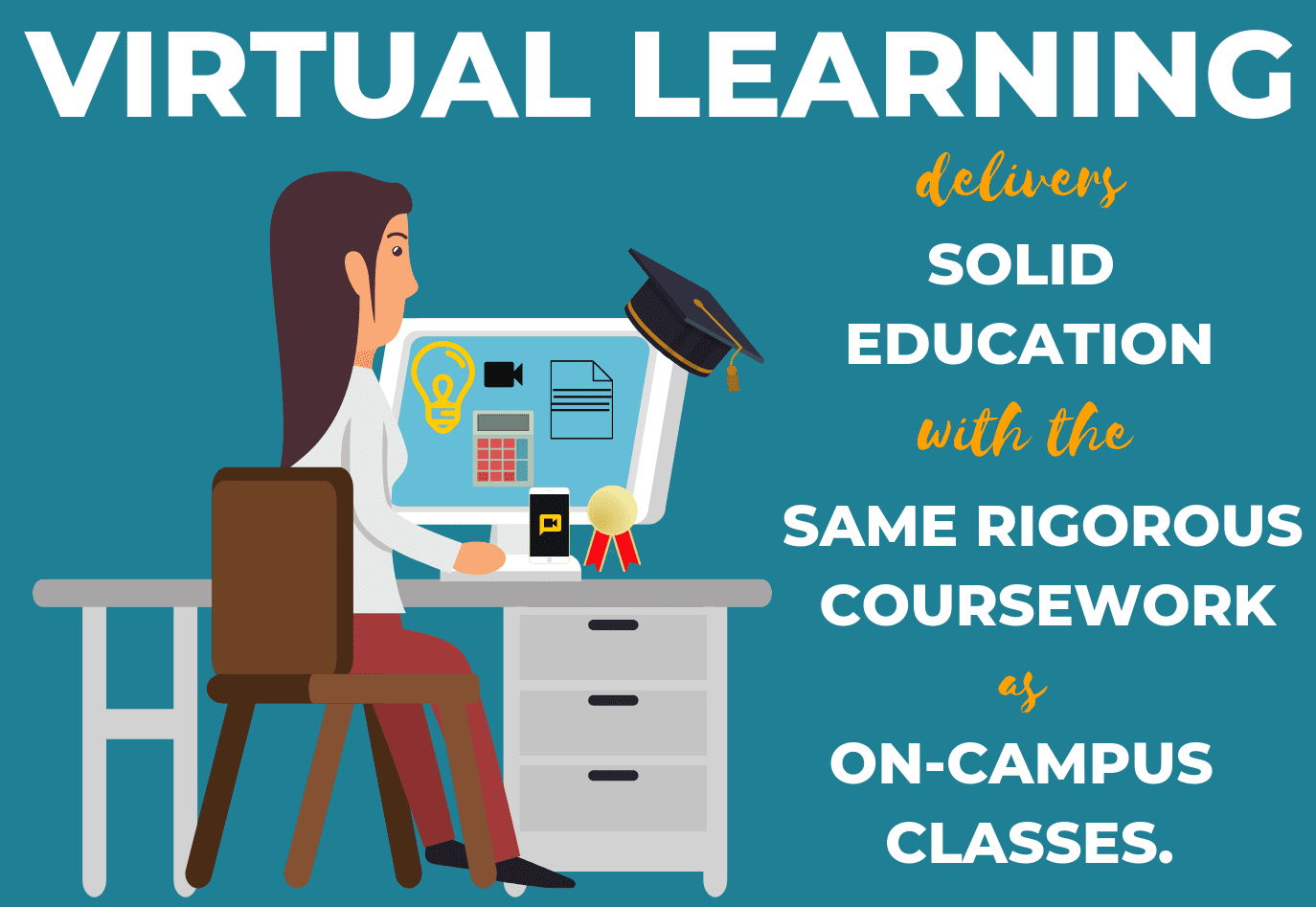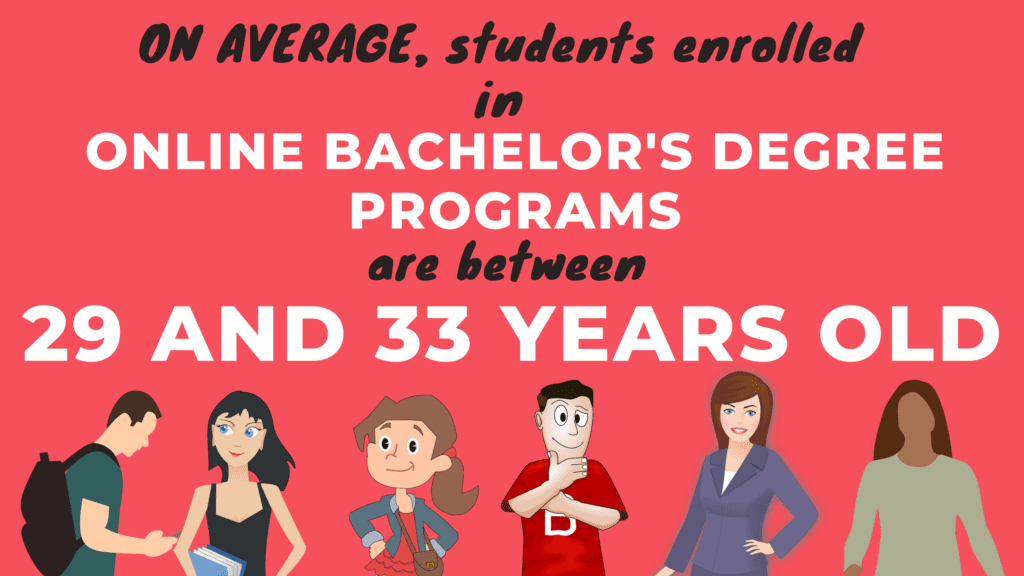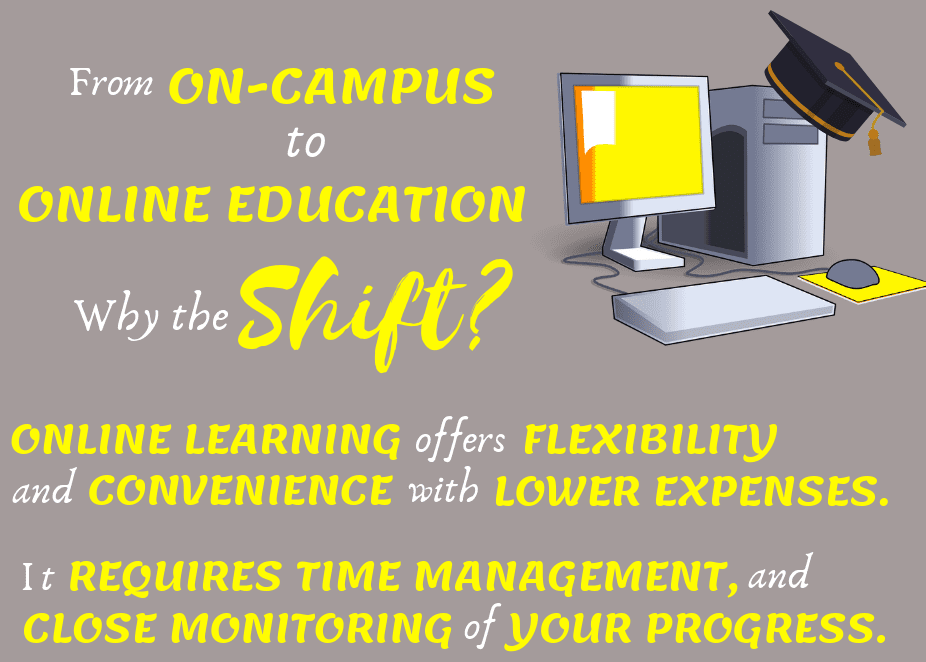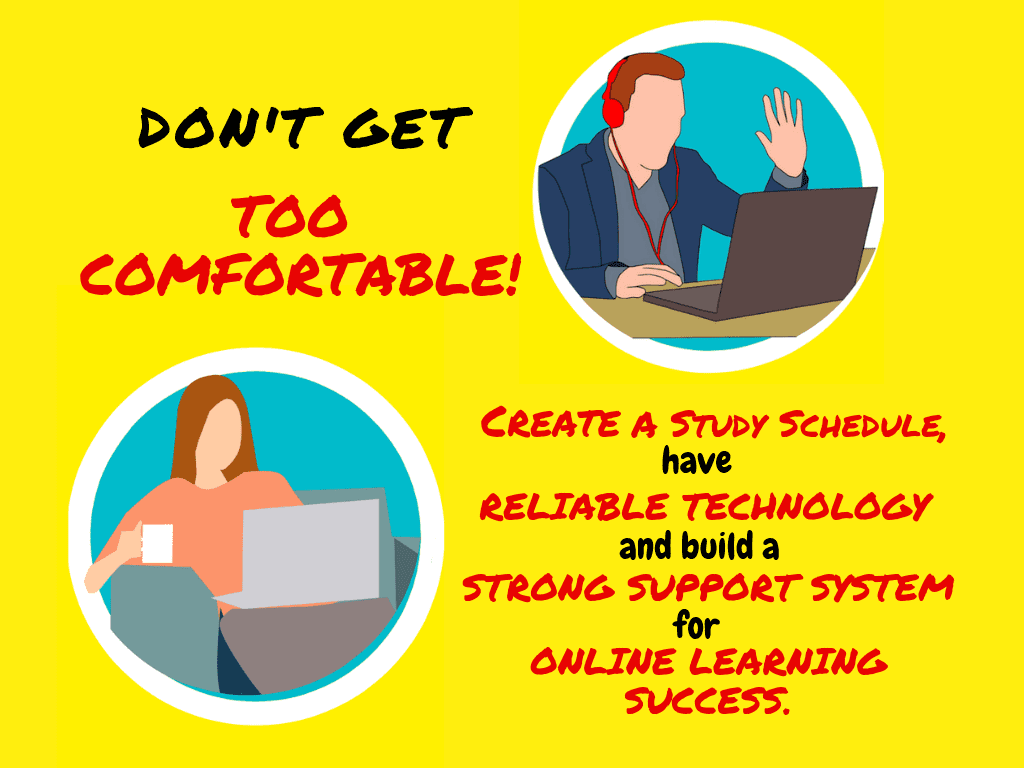With convenience, flexibility, and accessibility to various degrees in one platform, it’s no wonder why more students are opting to earn their degrees through virtual campuses. However, transitioning from an on-campus education to an online platform may cause significant shifts in the discipline and the learning process.


A study by Babson Survey Research Group revealed that the influx of enrollment in at least one online course increased by 5.6% from 2015 to 2016. Jeff Seaman, co-director and co-author at Babson predicted that the numbers are far from dropping anytime soon as on-campus enrollment continues to dwindle.
Online students taking a bachelor’s degree are between 29 to 33 years old on average. The majority of students taking up online classes are older students looking to balance school with family and work obligations.
It is anticipated that in the years, universities will be utilizing more advanced technologies to enhance learning through virtual reality, videoconference, robotic telepresence, gamification (an education format that uses games), and artificial intelligence, resulting in more efficient remote communication between students and instructors. With this in mind, older students may need further orientation on using these applications.
One of the most convincing reasons why online degrees are gaining traction is the fact that students realize the value of pursuing their educational goals without compromising their careers and family obligations. Through school-employer partnership programs, more employers are offering financial assistance to promote on-the-job training that enhances students’ skills and knowledge.

Fresh students may buy into the illusion that taking an online degree may provide more freedom (though this may be the case for most working adults); the demands are not far off from that of traditional coursework.
The same faculty teachers teaching on-campus will be the same teachers who will teach online students. Though the pace is customized, students will need to adhere to structure and self-motivation to help them succeed in this endeavor.
Some students may feel overwhelmed with specific topics from the program. While this fosters independent learning, students may feel stumped when they come across complex discussions with limited presence from online professors.
Another challenge is the lack of attention and feedback dominant in brick-and-mortar schools. With less physical interaction among fellow students and teachers, students may feel isolated from regular campus life.


While students may find these attributes ‘worrisome’, the advantages outweigh the bad ones. Here are a few quick solutions to help students overcome these obstacles.

Create a routine.
Working parents or individuals juggling multiple jobs may miss out on classes if they enroll in an on-campus program. However, through an online platform, this will give students flexibility as to the pace and time they’ll be working on projects and assignments. They can also start working on their assignments during ‘downtimes’ such as holidays or breaks from work.
Students can take a few courses per semester or take classes in shorter terms. Whichever fits their lifestyle and pace, earning an online degree will give students the freedom to accomplish each course minus the rigid schedules.
A little caveat: Despite the flexibility it offers, you need the discipline and commitment to stick to a particular schedule. The time lost is equivalent to the money lost too. Determine beforehand if you have the discipline to complete the required courses before the set deadline. Many virtual universities set timelines to accomplish a degree, at usually 4 to 7 years.
Create an achievable schedule. Setting the standards too high may make students discouraged when they don’t achieve them. With changes in life such as family commitments or a shift in responsibilities at work, it’s time to re-organize and find a schedule that works.

Use your previous credits to your advantage.
Some universities offer transfer credits for previous college credits, certifications, and work experience. For other institutions, students with previous military training and courses may be converted as transfer credits.
Having previous learning credits increases the chances of getting into a fast-track program. Students can earn their degree at a lesser time and cost especially if it’s in line with the course they have already taken.

Make every learning opportunity count.
Change is the only thing constant in life. In transitioning from a traditional to a virtual classroom, students may encounter new software and applications necessary to learn for them to take part in the class. This may be true for older students too.
For students who are ‘technologically challenged,’ this is an excellent opportunity to learn new skills. There could be skills they might encounter in any given industry hence the benefit of learning new things in a virtual school.
Some companies also offer the Federal Work-Study Program to help employees improve industry-related knowledge or skills to keep up with technology or innovation. If your current employer offers this program, it may be best to take advantage of it and maintain relevance.

Set a study space with suitable devices.
As previously mentioned, students may encounter new technology to improve education. And with that, certain upgrades may be necessary.
Online students spend an awful lot of time in front of their computer or laptop. This emphasizes the need for a suitable and comfortable space dedicated to studying. The workspace should simulate an almost similar environment to that of an on-campus classroom to foster concentration.
It’s best to clear this space from physical and digital distractions. There are productivity apps to help students with this challenge. It may also help to use applications for time management, organizing schedules and to-do lists, and keeping away from social media during the scheduled ‘school time.’ This study space should be well-lit, comfortable, and devoid of clutter and unnecessary items such as magazines to make it suitable for learning.

Use the university’s network.
Students, such as veterans and older adults, may have difficulty processing specific topics from their courses. A surefire way to overcome this roadblock is to look into university resource centers and networks.
Though students are not physically present, virtual campuses also serve as a place where they can interact with fellow students and ask questions among peers and professors. Schools use different technologies to communicate with their students such as Twitter, project management tools, Facebook, and specific online platforms provided by the institution.


What do I need to consider before choosing an online major?
You can start by narrowing your options. Think about the subjects you liked when you were in high school. Create three lists: topics you enjoyed learning, topics that ‘bore’ you, and topics you’re curious about but didn’t get to fully ‘enjoy’ because you didn’t like your teacher or were not explained clearly.
Out of that list, cross out the ‘boring’ one and filter the remaining two for possible degree choices. If this is not the structure you’d want, you can look into hobbies.
If you’re still unsure how to go about it, you can meet with an academic adviser. Some institutions allow one year of study before selecting a major to give you ample time to decide which major to take.

You can also do some career research. For example, you would like to write but find the freelance industry to be a problematic career jump after graduation. Your second-best choice would be to take a major in communication which covers writing but with a broader job opportunity in marketing and advertising.
If you already have college experience with an undergraduate degree, you can pursue higher education or shift to a different degree to complement your current one. Program length is another thing to look into especially if you’re studying part-time. Since you’ll be taking an online class, you will need to dedicate a certain amount of time to study, finish assignments, take an apprenticeship, and attend classes every week.

What are the crucial details I need to look for in an online virtual school?
There was a time when ‘degree mills’ were rampant online. But today, students are wiser and more cautious before enrolling in one. If this is your first time to enroll in an online college, here are some essential aspects of a legitimate virtual campus.
Third-party organizations check institutions for accreditation. These third-party entities review the standards in a similar to how they assess traditional schools. Legitimate schools usually allow for transfer credits such as military training and courses, previous college credits from an accredited school, and prior work training and courses attended. Students enrolled in an accredited institution are given high priority for employment.
Technical support is the resource center for students who need further assistance in dealing with technical issues such as using school-specific software to get to class and using cloud applications to send through documents.
This is an indicator of how much the school cares for its students and helps them in the best way they can to succeed in their education goals.
Students, whether part-time or full-time, may want to look into the financial aid available. Some schools offer grants and scholarships to help those who need help in paying tuition. Federal subsidies, military education benefits, and school-specific grants are things you can benefit from.
Do not disregard student reviews. These are essential to assess whether the school you are looking into provides the best education possible for distant learners and adult professionals.
This may be true if you are living outside the state and have no means to check out your school of choice physically. It would also be best to check for details such as acceptance rate and school fees. Compare this with other schools providing the same degree and see which one will suit your needs best.

What do students usually expect from taking online classes?
After you have done your research and streamlined your school of choice, it’s time to prepare all the documents for admission.
Schools have varying requirements for new students (those who graduated from high school) and those with previous college and work backgrounds. For new students, the usual elements are your high school original transcript, high school diploma, or high school equivalent such as GED.
Some schools will require you to submit an ACT or SAT score as part of the admission requirement. For students with prior college experience, they can submit courses taken, certifications, and previous college transcripts for evaluation.

Some online programs follow a traditional semester schedule (14 weeks) while others take these courses in smaller terms usually in a 7-week to 8-week duration. For students who graduated from an accredited institution, transfer credits apply but are subject to evaluation.
Transfer credits ease the time and money necessary to earn those credits when you enroll in a program. These transfers vary from institution to institution but the usual range allowed is around 60 to 90 credits.
While the platform may have a different ‘feel’ compared to a traditional one, the value is the same. Students need to remember that it takes a commitment to help them finish this journey. By taking these steps, they will save much time (and disappointments) until they finally reach their educational goals.
